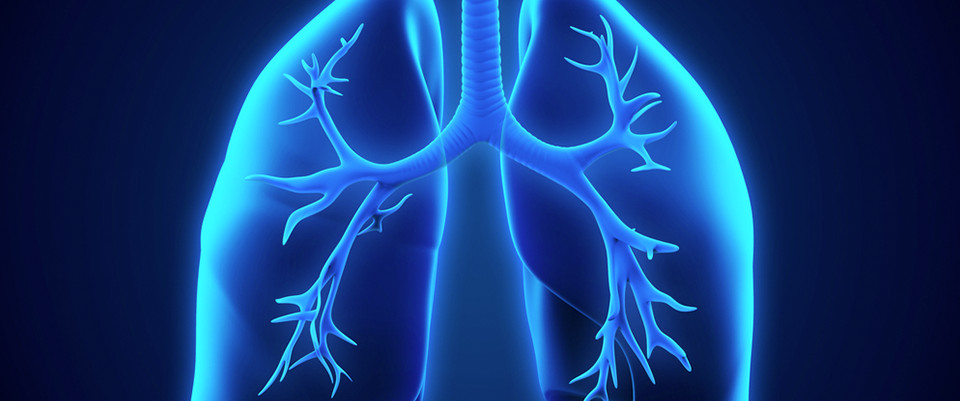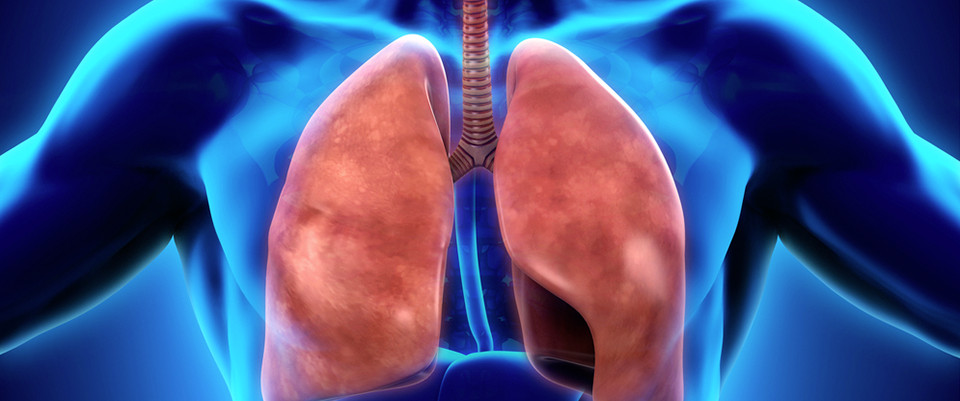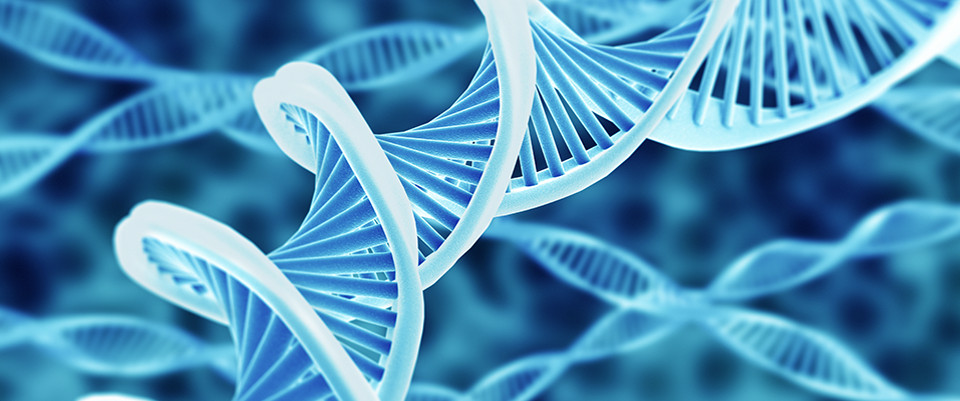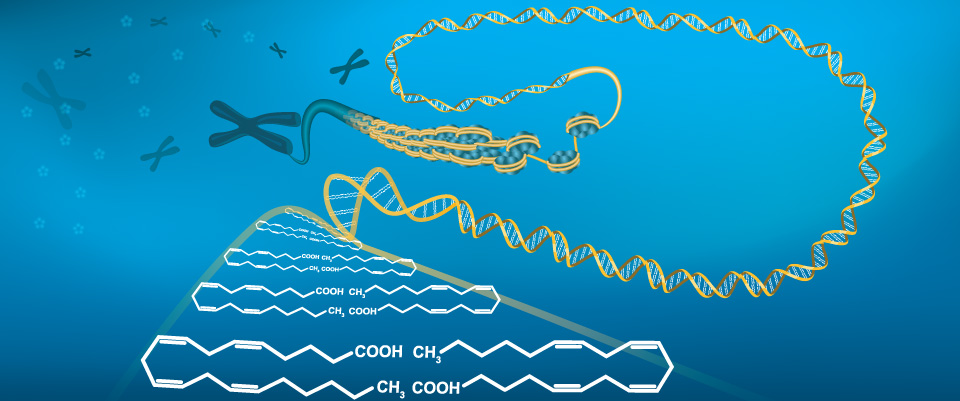PubMed
Nutrition and Metabolic Correlates of Obesity and Inflammation: Clinical Considerations.
Nutrition and Metabolic Correlates of Obesity and Inflammation: Clinical Considerations.
J Nutr. 2015 Apr 1;
Authors: Johnson AR, Makowski L
Abstract
Since 1980, the global prevalence of obesity has doubled; in the United States, it has almost tripled. Billions of people are overweight and obese; the WHO reports that >65% of the world's population die of diseases related to overweight rather than underweight. Obesity is a complex disease that can be studied from "metropolis to metabolite"-that is, beginning at the policy and the population level through epidemiology and intervention studies; to bench work including preclinical models, tissue, and cell culture studies; to biochemical assays; and to metabolomics. Metabolomics is the next research frontier because it provides a real-time snapshot of biochemical building blocks and products of cellular processes. This report comments on practical considerations when conducting metabolomics research. The pros and cons and important study design concerns are addressed to aid in increasing metabolomics research in the United States. The link between metabolism and inflammation is an understudied phenomenon that has great potential to transform our understanding of immunometabolism in obesity, diabetes, cancer, and other diseases; metabolomics promises to be an important tool in understanding the complex relations between factors contributing to such diseases.
PMID: 25833891 [PubMed - as supplied by publisher]
Whey Protein Supplementation Does Not Alter Plasma Branched-Chained Amino Acid Profiles but Results in Unique Metabolomics Patterns in Obese Women Enrolled in an 8-Week Weight Loss Trial.
Whey Protein Supplementation Does Not Alter Plasma Branched-Chained Amino Acid Profiles but Results in Unique Metabolomics Patterns in Obese Women Enrolled in an 8-Week Weight Loss Trial.
J Nutr. 2015 Apr;145(4):691-700
Authors: Piccolo BD, Comerford KB, Karakas SE, Knotts TA, Fiehn O, Adams SH
Abstract
BACKGROUND: It has been suggested that perturbations in branched-chain amino acid (BCAA) catabolism are associated with insulin resistance and contribute to elevated systemic BCAAs. Evidence in rodents suggests dietary protein rich in BCAAs can increase BCAA catabolism, but there is limited evidence in humans.
OBJECTIVE: We hypothesize that a diet rich in BCAAs will increase BCAA catabolism, which will manifest in a reduction of fasting plasma BCAA concentrations.
METHODS: The metabolome of 27 obese women with metabolic syndrome before and after weight loss was investigated to identify changes in BCAA metabolism using GC-time-of-flight mass spectrometry. Subjects were enrolled in an 8-wk weight-loss study including either a 20-g/d whey (whey group, n = 16) or gelatin (gelatin group, n = 11) protein supplement. When matched for total protein by weight, whey protein has 3 times the amount of BCAAs compared with gelatin protein.
RESULTS: Postintervention plasma abundances of Ile (gelatin group: 637 ± 18, quantifier ion peak height ÷ 100; whey group: 744 ± 65), Leu (gelatin group: 1210 ± 33; whey group: 1380 ± 79), and Val (gelatin group: 2080 ± 59; whey group: 2510 ± 230) did not differ between treatment groups. BCAAs were significantly correlated with homeostasis model assessment of insulin resistance at baseline (r = 0.52, 0.43, and 0.49 for Leu, Ile, and Val, respectively; all, P < 0.05), but correlations were no longer significant at postintervention. Pro- and Cys-related pathways were found discriminant of whey protein vs. gelatin protein supplementation in multivariate statistical analyses.
CONCLUSIONS: These findings suggest that BCAA metabolism is, at best, only modestly affected at a whey protein supplementation dose of 20 g/d. Furthermore, the loss of an association between postintervention BCAA and homeostasis model assessment suggests that factors associated with calorie restriction or protein intake affect how plasma BCAAs relate to insulin sensitivity. This trial was registered at clinicaltrials.gov as NCT00739479.
PMID: 25833773 [PubMed - as supplied by publisher]
Habitual Physical Activity and Plasma Metabolomic Patterns Distinguish Individuals with Low vs. High Weight Loss during Controlled Energy Restriction.
Habitual Physical Activity and Plasma Metabolomic Patterns Distinguish Individuals with Low vs. High Weight Loss during Controlled Energy Restriction.
J Nutr. 2015 Apr;145(4):681-690
Authors: Piccolo BD, Keim NL, Fiehn O, Adams SH, Van Loan MD, Newman JW
Abstract
BACKGROUND: Total weight loss induced by energy restriction is highly variable even under tightly controlled conditions. Identifying weight-loss discriminants would provide a valuable weight management tool and insights into body weight regulation.
OBJECTIVE: This study characterized responsiveness to energy restriction in adults from variables including the plasma metabolome, endocrine and inflammatory markers, clinical indices, body composition, diet, and physical activity.
METHODS: Data were derived from a controlled feeding trial investigating the effect of 3-4 dairy product servings in an energy-restricted diet (2092 kJ/d reduction) over 12 wk. Partial least squares regression was used to identify weight-loss discriminants in 67 overweight and obese adults. Linear mixed models were developed to identify discriminant variable differences in high- vs. low-weight-loss responders.
RESULTS: Both pre- and postintervention variables (n = 127) were identified as weight-loss discriminants (root mean squared error of prediction = 1.85 kg; Q(2) = 0.43). Compared with low-responders (LR), high-responders (HR) had greater decreases in body weight (LR: 2.7 ± 1.6 kg; HR: 9.4 ± 1.8 kg, P < 0.01), BMI (in kg/m(2); LR: 1.0 ± 0.6; HR: 3.3 ± 0.5, P < 0.01), and total fat (LR: 2.2 ± 1.1 kg; HR: 8.0 ± 2.1 kg, P < 0.01). Significant group effects unaffected by the intervention were determined for the respiratory exchange ratio (LR: 0.86 ± 0.05; HR: 0.82 ± 0.03, P < 0.01), moderate physical activity (LR: 127 ± 52 min; HR: 167 ± 68 min, P = 0.02), sedentary activity (LR: 1090 ± 99 min; HR: 1017 ± 110 min, P = 0.02), and plasma stearate [LR: 102,000 ± 21,000 quantifier ion peak height (QIPH); HR: 116,000 ± 24,000 QIPH, P = 0.01].
CONCLUSIONS: Overweight and obese individuals highly responsive to energy restriction had accelerated reductions in adiposity, likely supported in part by higher lipid mobilization and combustion. A novel observation was that person-to-person differences in habitual physical activity and magnitude of weight loss were accompanied by unique blood metabolite signatures. This trial was registered at clinicaltrials.gov as NCT00858312.
PMID: 25833772 [PubMed - as supplied by publisher]
Application of high-resolution mass spectrometry to measure low abundance isotope enrichment in individual muscle proteins.
Application of high-resolution mass spectrometry to measure low abundance isotope enrichment in individual muscle proteins.
Anal Bioanal Chem. 2015 Apr 2;
Authors: Hines KM, Ford GC, Klaus KA, Irving BA, Ford BL, Johnson KL, Lanza IR, Nair KS
Abstract
Stable isotope-labeled amino acids have long been used to measure the fractional synthesis rate of proteins, although the mass spectrometry platforms used for such analyses have changed throughout the years. More recently, tandem mass spectrometers such as triple quadrupoles have been accepted as the standard platform for enrichment measurement due to their sensitivity and the enhanced specificity offered by multiple reaction monitoring (MRM) experiments. The limit in the utility of such platforms for enrichment analysis occurs when measuring very low levels of enrichment from small amounts of sample, particularly proteins isolated from two-dimensional gel electrophoresis (2D-GE), where interference from contaminant ions impacts the sensitivity of the measurement. We therefore applied a high-resolution orbitrap mass spectrometer to the analysis of [ring-(13)C6]-phenylalanine enrichment in individual muscle proteins isolated with 2D-GE. Comparison of samples analyzed on both platforms revealed that the high-resolution MS has significantly improved sensitivity relative to the triple quadrupole MS at very low-level enrichments due to its ability to resolve interferences in the m/z dimension. At higher enrichment levels, enrichment measurements from the orbitrap platform showed significant correlation (R (2) > 0.5) with those of the triple quadrupole platform. Together, these results indicate that high-resolution MS platforms such as the orbitrap are not only as capable of performing isotope enrichment measurements as the more commonly preferred triple quadrupole instruments, but offer unparalleled advantages in terms of mass accuracy and sensitivity in the presence of similar-mass contaminants.
PMID: 25832482 [PubMed - as supplied by publisher]
Analyses of the Transcriptome and Metabolome Demonstrate That HIF1α Mediates Altered Tumor Metabolism in Clear Cell Renal Cell Carcinoma.
Related Articles
Analyses of the Transcriptome and Metabolome Demonstrate That HIF1α Mediates Altered Tumor Metabolism in Clear Cell Renal Cell Carcinoma.
PLoS One. 2015;10(4):e0120649
Authors: Minton DR, Fu L, Chen Q, Robinson BD, Gross SS, Nanus DM, Gudas LJ
Abstract
Hypoxia inducible factor 1 alpha (HIF1α) is a transcription factor that is frequently stabilized and active in human clear cell renal cell carcinoma (ccRCC). We have found that constitutively active HIF1α is sufficient to cause neoplastic transformation in a murine model of ccRCC termed the TRACK model. RNA sequencing (RNAseq) and untargeted metabolomics analyses of samples from TRACK kidneys demonstrate that HIF1α activates the transcription of genes that cause increased glucose uptake, glycolysis, and lactate production, as well as a decrease in the flux of pyruvate entering the tricarboxylic acid (TCA) cycle and a decrease in oxidative phosphorylation; these changes are identical to those observed in human ccRCC samples. These studies show that a constitutively active HIF1α promotes tumorigenesis in TRACK mice by mediating a metabolic switch to aerobic glycolysis, i.e., the Warburg effect, and suggest that TRACK mice are a valid model to test novel therapies targeting metabolic changes to inhibit human ccRCC.
PMID: 25830305 [PubMed - as supplied by publisher]
Evidence for a link between Gut Microbiota and Hypertension in the Dahl rat model.
Related Articles
Evidence for a link between Gut Microbiota and Hypertension in the Dahl rat model.
Physiol Genomics. 2015 Mar 31;:physiolgenomics.00136.2014
Authors: Mell B, Jala VR, Mathew AV, Byun J, Waghulde H, Zhang Y, Haribabu B, Vijay-Kumar M, Pennathur S, Joe B
Abstract
Gut microbiota play a critical role in maintaining physiological homeostasis. This study was designed to evaluate whether gut microbial composition impacts hypertension. 16S rRNA genes obtained from cecal samples of Dahl salt-sensitive (S) and Dahl salt-resistant (R) rats, were sequenced. Bacteria of the phylum Bacteriodetes were higher in the S rats compared with the R rats. Further, the family S24-7 of the phylum Bacteriodetes and the family Veillonellaceae of the phylum Firmicutes were higher in the S rats compared to the R rats. Analyses of the various phylogenetic groups of cecal microbiota revealed significant differences between S and R rats. Both strains were maintained on a high-salt diet, administered antibiotics for ablation of microbiota, transplanted with S or R rat cecal contents and monitored for blood pressure (BP). Systolic BP of the R rats remained unaltered irrespective of S or R rat cecal transplantation. Surprisingly, compared to the S rats given S rat cecal content, systolic BP of the S rats given a single bolus of cecal content from R rats was consistently and significantly elevated during the rest of their life and had a shorter lifespan. Lower level of fecal bacteria of the family Veillonellaceae and increased plasma acetate and heptanoate were features associated with the increased BP observed in the S rats given R rat microbiota compared with the S rats given S rat microbiota. These data demonstrate a link between microbial content and BP regulation and because the S and R rats differ in their genomic composition, provide the necessary basis to further examine the relationship between the host genome and microbiome in the context of BP regulation in the Dahl rats.
PMID: 25829393 [PubMed - as supplied by publisher]
Women with preterm birth have a distinct cervico-vaginal metabolome.
Related Articles
Women with preterm birth have a distinct cervico-vaginal metabolome.
Am J Obstet Gynecol. 2015 Mar 28;
Authors: Ghartey J, Bastek JA, Brown A, Anglim L, Elovitz MA
Abstract
OBJECTIVE: Metabolomics has the potential to reveal novel pathways involved in the pathogenesis of preterm birth (PTB). The objective of this study was to investigate if the cervico-vaginal (CV) metabolome was different in asymptomatic women destined to have a PTB compared to term birth.
STUDY DESIGN: A nested case-control study was performed using CV fluid collected from a larger prospective cohort. CV fluid was collected between 20-24 weeks (V1) and 24-28 weeks (V2). The metabolome was compared between women with a spontaneous PTB (n=10) to women who delivered at term (n=10). Samples were extracted and prepared for analysis using a standard extraction solvent method (Metabolon®, Durham, NC). Global biochemical profiles were determined using GC/MS and UPLC MS/MS. ANOVA was used to detect differences in biochemical compounds between the groups. A false discovery rate was estimated to account for multiple comparisons.
RESULT: A total of 313 biochemicals were identified in CV fluid. 82 biochemicals were different in the CV fluid at V1 in those destined to have a PTB compared to term birth while 48 were different at V2 (Table 1). Amino acid, carbohydrate, and peptide metabolites were distinct between women with and without PTB.
CONCLUSION: These data suggest that the CV space is metabolically active during pregnancy. Changes in the CV metabolome may be observed weeks, if not months, prior to any clinical symptoms. Understanding the CV metabolome may hold promise for unraveling the pathogenesis of PTB and may provide novel biomarkers to identify women most at risk.
PMID: 25827503 [PubMed - as supplied by publisher]
Omics for aquatic ecotoxicology; Control of extraneous variability to enhance the analysis of environmental effects.
Related Articles
Omics for aquatic ecotoxicology; Control of extraneous variability to enhance the analysis of environmental effects.
Environ Toxicol Chem. 2015 Apr 1;
Authors: Simmons DB, Benskin JP, Cosgrove JR, Duncker BP, Ekman DR, Martyniuk CJ, Sherry JP
Abstract
There are multiple sources of biological and technical variation in a typical ecotoxicology study that may not be revealed by traditional endpoints but that become apparent in an omics dataset. As researchers increasingly apply omics technologies to environmental studies, it will be necessary to challenge ourselves to understand and control the main source(s) of variability to facilitate meaningful interpretation of such data. For instance, can variability in omics studies be addressed by changing our approach to study design and data analysis? Are there statistical methods that we can employ to correctly interpret omics data and make use of unattributed, inherent variability? In the present article, we review experimental design and statistical considerations applicable to using omics methods in systems toxicology studies. In addition to highlighting potential sources that contribute to experimental variability, this review suggests strategies with which to reduce and/or control such variability so as to improve reliability, reproducibility, and ultimately the application of omics data for systems toxicology. This article is protected by copyright. All rights reserved.
PMID: 25827364 [PubMed - as supplied by publisher]
Resource recovery from wastewater: application of meta-omics to phosphorus and carbon management.
Related Articles
Resource recovery from wastewater: application of meta-omics to phosphorus and carbon management.
Curr Opin Biotechnol. 2015 Mar 26;33:260-267
Authors: Sales CM, Lee PK
Abstract
A growing trend at wastewater treatment plants is the recovery of resources and energy from wastewater. Enhanced biological phosphorus removal and anaerobic digestion are two established biotechnology approaches for the recovery of phosphorus and carbon, respectively. Meta-omics approaches (meta-genomics, transcriptomics, proteomics, and metabolomics) are providing novel biological insights into these complex biological systems. In particular, genome-centric metagenomics analyses are revealing the function and physiology of individual community members. Querying transcripts, proteins and metabolites are emerging techniques that can inform the cellular responses under different conditions. Overall, meta-omics approaches are shedding light into complex microbial communities once regarded as 'blackboxes', but challenges remain to integrate information from meta-omics into engineering design and operation guidelines.
PMID: 25827118 [PubMed - as supplied by publisher]
Editorial on "Current approaches and challenges for the metabolite profiling of complex natural extracts" by Jean-Luc Wolfender, Guillaume Marti, Aurélien Thomas and Samuel Bertrand.
Related Articles
Editorial on "Current approaches and challenges for the metabolite profiling of complex natural extracts" by Jean-Luc Wolfender, Guillaume Marti, Aurélien Thomas and Samuel Bertrand.
J Chromatogr A. 2015 Feb 20;1382:135
Authors: Fanali S
PMID: 25465368 [PubMed - indexed for MEDLINE]
Microfluidics-to-mass spectrometry: a review of coupling methods and applications.
Related Articles
Microfluidics-to-mass spectrometry: a review of coupling methods and applications.
J Chromatogr A. 2015 Feb 20;1382:98-116
Authors: Wang X, Yi L, Mukhitov N, Schrell AM, Dhumpa R, Roper MG
Abstract
Microfluidic devices offer great advantages in integrating sample processes, minimizing sample and reagent volumes, and increasing analysis speed, while mass spectrometry detection provides high information content, is sensitive, and can be used in quantitative analyses. The coupling of microfluidic devices to mass spectrometers is becoming more common with the strengths of both systems being combined to analyze precious and complex samples. This review summarizes select achievements published between 2010 and July 2014 in novel coupling between microfluidic devices and mass spectrometers. The review is subdivided by the types of ionization sources employed, and the different microfluidic systems used.
PMID: 25458901 [PubMed - indexed for MEDLINE]
A combined metabolomic and phylogenetic study reveals putatively prebiotic effects of high molecular weight arabino-oligosaccharides when assessed by in vitro fermentation in bacterial communities derived from humans.
Related Articles
A combined metabolomic and phylogenetic study reveals putatively prebiotic effects of high molecular weight arabino-oligosaccharides when assessed by in vitro fermentation in bacterial communities derived from humans.
Anaerobe. 2014 Aug;28:68-77
Authors: Sulek K, Vigsnaes LK, Schmidt LR, Holck J, Frandsen HL, Smedsgaard J, Skov TH, Meyer AS, Licht TR
Abstract
Prebiotic oligosaccharides are defined by their selective stimulation of growth and/or activity of bacteria in the digestive system in ways claimed to be beneficial for health. However, apart from the short chain fatty acids, little is known about bacterial metabolites created by fermentation of prebiotics, and the significance of the size of the oligosaccharides remains largely unstudied. By in vitro fermentations in human fecal microbial communities (derived from six different individuals), we studied the effects of high-mass (HA, >1 kDa), low-mass (LA, <1 kDa) and mixed (BA) sugar beet arabino-oligosaccharides (AOS) as carbohydrate sources. Fructo-oligosaccharides (FOS) were included as reference. The changes in bacterial communities and the metabolites produced in response to incubation with the different carbohydrates were analyzed by quantitative PCR (qPCR) and Liquid Chromatography-Mass Spectrometry (LC-MS), respectively. All tested carbohydrate sources resulted in a significant increase of Bifidobacterium spp. between 1.79 fold (HA) and 1.64 fold (FOS) in the microbial populations after fermentation, and LC-MS analysis suggested that the bifidobacteria contributed to decomposition of the arabino-oligosaccharide structures, most pronounced in the HA fraction, resulting in release of the essential amino acid phenylalanine. Abundance of Lactobacillus spp. correlated with the presence of a compound, most likely a flavonoid, indicating that lactobacilli contribute to release of such health-promoting substances from plant structures. Additionally, the combination of qPCR and LC-MS revealed a number of other putative interactions between intestinal microbes and the oligosaccharides, which contributes to the understanding of the mechanisms behind prebiotic impact on human health.
PMID: 24905430 [PubMed - indexed for MEDLINE]
Water shortage and quality of fleshy fruits--making the most of the unavoidable.
Related Articles
Water shortage and quality of fleshy fruits--making the most of the unavoidable.
J Exp Bot. 2014 Aug;65(15):4097-117
Authors: Ripoll J, Urban L, Staudt M, Lopez-Lauri F, Bidel LP, Bertin N
Abstract
Extreme climatic events, including drought, are predicted to increase in intensity, frequency, and geographic extent as a consequence of global climate change. In general, to grow crops successfully in the future, growers will need to adapt to less available water and to take better advantage of the positive effects of drought. Fortunately, there are positive effects associated with drought. Drought stimulates the secondary metabolism, thereby potentially increasing plant defences and the concentrations of compounds involved in plant quality, particularly taste and health benefits. The role of drought on the production of secondary metabolites is of paramount importance for fruit crops. However, to manage crops effectively under conditions of limited water supply, for example by applying deficit irrigation, growers must consider not only the impact of drought on productivity but also on how plants manage the primary and secondary metabolisms. This question is obviously complex because during water deficit, trade-offs among productivity, defence, and quality depend upon the intensity, duration, and repetition of events of water deficit. The stage of plant development during the period of water deficit is also crucial, as are the effects of other stressors. In addition, growers must rely on relevant indicators of water status, i.e. parameters involved in the relevant metabolic processes, including those affecting quality. Although many reports on the effects of drought on plant function and crop productivity have been published, these issues have not been reviewed thus far. Here, we provide an up-to-date review of current knowledge of the effects of different forms of drought on fruit quality relative to the primary and secondary metabolisms and their interactions. We also review conventional and less conventional indicators of water status that could be used for monitoring purposes, such as volatile compounds. We focus on fruit crops owing to the importance of secondary metabolism in fruit quality and the importance of fruits in the human diet. The issue of defence is also briefly discussed.
PMID: 24821951 [PubMed - indexed for MEDLINE]
metabolomics; +16 new citations
16 new pubmed citations were retrieved for your search.
Click on the search hyperlink below to display the complete search results:
metabolomics
These pubmed results were generated on 2015/04/01PubMed comprises more than 24 million citations for biomedical literature from MEDLINE, life science journals, and online books.
Citations may include links to full-text content from PubMed Central and publisher web sites.
metabolomics; +68 new citations
68 new pubmed citations were retrieved for your search.
Click on the search hyperlink below to display the complete search results:
metabolomics
These pubmed results were generated on 2015/03/31PubMed comprises more than 24 million citations for biomedical literature from MEDLINE, life science journals, and online books.
Citations may include links to full-text content from PubMed Central and publisher web sites.
A Promising Raman Spectroscopy Technique for the Investigation of trans and cis Cholesteryl Ester Isomers in Biological Samples.
A Promising Raman Spectroscopy Technique for the Investigation of trans and cis Cholesteryl Ester Isomers in Biological Samples.
Appl Spectrosc. 2015 Apr 1;
Authors: Melchiorre M, Ferreri C, Tinti A, Chatgilialoglu C, Torreggiani A
Abstract
Lipid geometry is an important issue in biology and medicine. The cis-trans geometry conversion of double bonds in lipids is an endogenous process that can be mediated by sulfur-centered free radicals. Trans isomers of polyunsaturated fatty acids can be used as biological markers of free radical stress, and their presence in biological samples can be determined by synthesis and characterization of appropriate reference compounds. Fractions of plasma lipids, such as cholesteryl linoleate and arachidonate esters, are interesting targets because of their connection with membrane phospholipid turnover and their roles in cardiovascular health. In this context, Raman spectroscopy can provide a useful contribution, since Raman analysis can be performed directly on the lipid extracts without any derivatization reaction, is nondestructive, and can rapidly supply biochemical information. This study focused on the build up of Raman spectral libraries of different cis and trans isomers of cholesteryl esters to be used as references for the examination of complex biological samples and to facilitate isomer recognition. Unsaturated cholesteryl esters obtained by chemical synthesis and with different alkyl chain lengths, double bond numbers, or both, were analyzed. The potential of Raman analysis for trans isomer detection in biological samples was successfully tested on some cholesteryl ester lipid fractions from human serum. The data suggest promising applications of Raman spectroscopy in metabolomics and lipidomics.
PMID: 25812111 [PubMed - as supplied by publisher]
Identification of Small Molecules that Disrupt Signaling between ABL and Its Positive Regulator RIN1.
Identification of Small Molecules that Disrupt Signaling between ABL and Its Positive Regulator RIN1.
PLoS One. 2015;10(3):e0121833
Authors: Ting PY, Damoiseaux R, Titz B, Bradley KA, Graeber TG, Fernández-Vega V, Bannister TD, Chase P, Nair R, Scampavia L, Hodder P, Spicer TP, Colicelli J
Abstract
Constitutively active BCR-ABL kinase fusions are causative mutations in the pathogenesis of hematopoietic neoplasias including chronic myelogenous leukemia (CML). Although these fusions have been successfully targeted with kinase inhibitors, drug-resistance and relapse continue to limit long-term survival, highlighting the need for continued innovative drug discovery. We developed a time-resolved Förster resonance energy transfer (TR-FRET) -based assay to identify compounds that disrupt stimulation of the ABL kinase by blocking its ability to bind the positive regulator RIN1. This assay was used in a high throughput screen (HTS) of two small molecule libraries totaling 444,743 compounds. 708 confirmed hits were counter-screened to eliminate off-target inhibitors and reanalyzed to prioritize compounds with IC50 values below 10 μM. The CML cell line K562 was then used to identify five compounds that decrease MAPK1/3 phosphorylation, which we determined to be an indicator of RIN1-dependent ABL signaling. One of these compounds is a thiadiazole, and the other four are structurally related acyl piperidine amides. Notably, these five compounds lower cellular BCR-ABL1 kinase activity by blocking a positive regulatory interaction rather than directly inhibiting ABL catalytic function.
PMID: 25811598 [PubMed - as supplied by publisher]
Endo-Lysosomal Dysfunction in Human Proximal Tubular Epithelial Cells Deficient for Lysosomal Cystine Transporter Cystinosin.
Endo-Lysosomal Dysfunction in Human Proximal Tubular Epithelial Cells Deficient for Lysosomal Cystine Transporter Cystinosin.
PLoS One. 2015;10(3):e0120998
Authors: Ivanova EA, De Leo MG, Van Den Heuvel L, Pastore A, Dijkman H, De Matteis MA, Levtchenko EN
Abstract
Nephropathic cystinosis is a lysosomal storage disorder caused by mutations in the CTNS gene encoding cystine transporter cystinosin that results in accumulation of amino acid cystine in the lysosomes throughout the body and especially affects kidneys. Early manifestations of the disease include renal Fanconi syndrome, a generalized proximal tubular dysfunction. Current therapy of cystinosis is based on cystine-lowering drug cysteamine that postpones the disease progression but offers no cure for the Fanconi syndrome. We studied the mechanisms of impaired reabsorption in human proximal tubular epithelial cells (PTEC) deficient for cystinosin and investigated the endo-lysosomal compartments of cystinosin-deficient PTEC by means of light and electron microscopy. We demonstrate that cystinosin-deficient cells had abnormal shape and distribution of the endo-lysosomal compartments and impaired endocytosis, with decreased surface expression of multiligand receptors and delayed lysosomal cargo processing. Treatment with cysteamine improved surface expression and lysosomal cargo processing but did not lead to a complete restoration and had no effect on the abnormal morphology of endo-lysosomal compartments. The obtained results improve our understanding of the mechanism of proximal tubular dysfunction in cystinosis and indicate that impaired protein reabsorption can, at least partially, be explained by abnormal trafficking of endosomal vesicles.
PMID: 25811383 [PubMed - as supplied by publisher]
PPARα inhibition modulates multiple reprogrammed metabolic pathways in kidney cancer and attenuates tumor growth.
PPARα inhibition modulates multiple reprogrammed metabolic pathways in kidney cancer and attenuates tumor growth.
Am J Physiol Cell Physiol. 2015 Mar 25;:ajpcell.00322.2014
Authors: Abu Aboud O, Donohoe D, Bultman S, Fitch M, Riiff T, Hellerstein M, Weiss RH
Abstract
Kidney cancer (RCC) is the 6(th) most common cancer in the US and its incidence is increasing. The current progression-free survival for patients with advanced RCC rarely extends beyond 1-2 years due to the development of therapeutic resistance. We previously identified PPARα as a potential therapeutic target for this disease and showed that a specific PPARα antagonist, GW6471, induced both apoptosis and cell cycle arrest at G0/G1 in RCC cell lines associated with attenuation of cell cycle regulatory proteins. We now extend that work and show that PPARα inhibition attenuates components of RCC metabolic reprogramming capitalizing on the Warburg effect. The specific PPARα inhibitor GW6471, as well as an siRNA specific to PPARα, attenuate the enhanced fatty acid oxidation and oxidative phosphorylation associated with glycolysis inhibition, and PPARα antagonism also blocks the enhanced glycolysis which has been observed in RCC cells; this effect did not occur in normal human kidney epithelial cells. Such cell type-specific glycolysis inhibition corresponds with changes in protein levels of the oncogene c-Myc and has promising clinical implications. Furthermore, we show that treatment with GW6471 results in RCC tumor growth attenuation in a xenograft mouse model with minimal obvious toxicity, a finding associated with the expected on-target effects upon c-Myc. These studies demonstrate that several pivotal cancer-relevant metabolic pathways are inhibited by PPARα antagonism. Our data support the concept that targeting PPARα, with or without concurrent glycolysis inhibition, is a potential novel and effective therapeutic approach for RCC which targets metabolic reprogramming in this tumor.
PMID: 25810260 [PubMed - as supplied by publisher]
Metabolites profiling of Chrysanthemum pacificum Nakai parts using UPLC-PDA-MS coupled to chemometrics.
Metabolites profiling of Chrysanthemum pacificum Nakai parts using UPLC-PDA-MS coupled to chemometrics.
Nat Prod Res. 2015 Mar 26;:1-8
Authors: Farag NF, Farag MA, Abdelrahman EH, Azzam SM, El-Kashoury ES
Abstract
Methanol-soluble constituents from the flowers, non-flowering aerial parts and roots of Chrysanthemum pacificum Nakai were analysed via high resolution UPLC-PDA-qTOF-MS followed by chemometrics. Forty-seven chromatographic peaks belonging to various metabolite classes were detected. Most metabolite classes showed qualitative and quantitative differences across parts, with luteolin conjugates being mostly enriched in flowers whereas non-flowering aerial parts contained mostly quercetin and methoxylated flavone conjugates. Root sample ranked the lowest for all flavones and dicaffeoylquinic acids. In contrast, 1,5-di-caffeoylquinic acid levels were found at high levels in flowers and aerial parts reaching 3145 and 1390 μg/g, respectively, suggesting that C. pacificum could serve as a natural resource of this well-recognised anti-hepatotoxic phenolic. Principal component analysis was further used for organs classification in an untargeted manner. This study provides the first map of secondary metabolites distribution in C. pacificum Nakai organs.
PMID: 25810048 [PubMed - as supplied by publisher]











